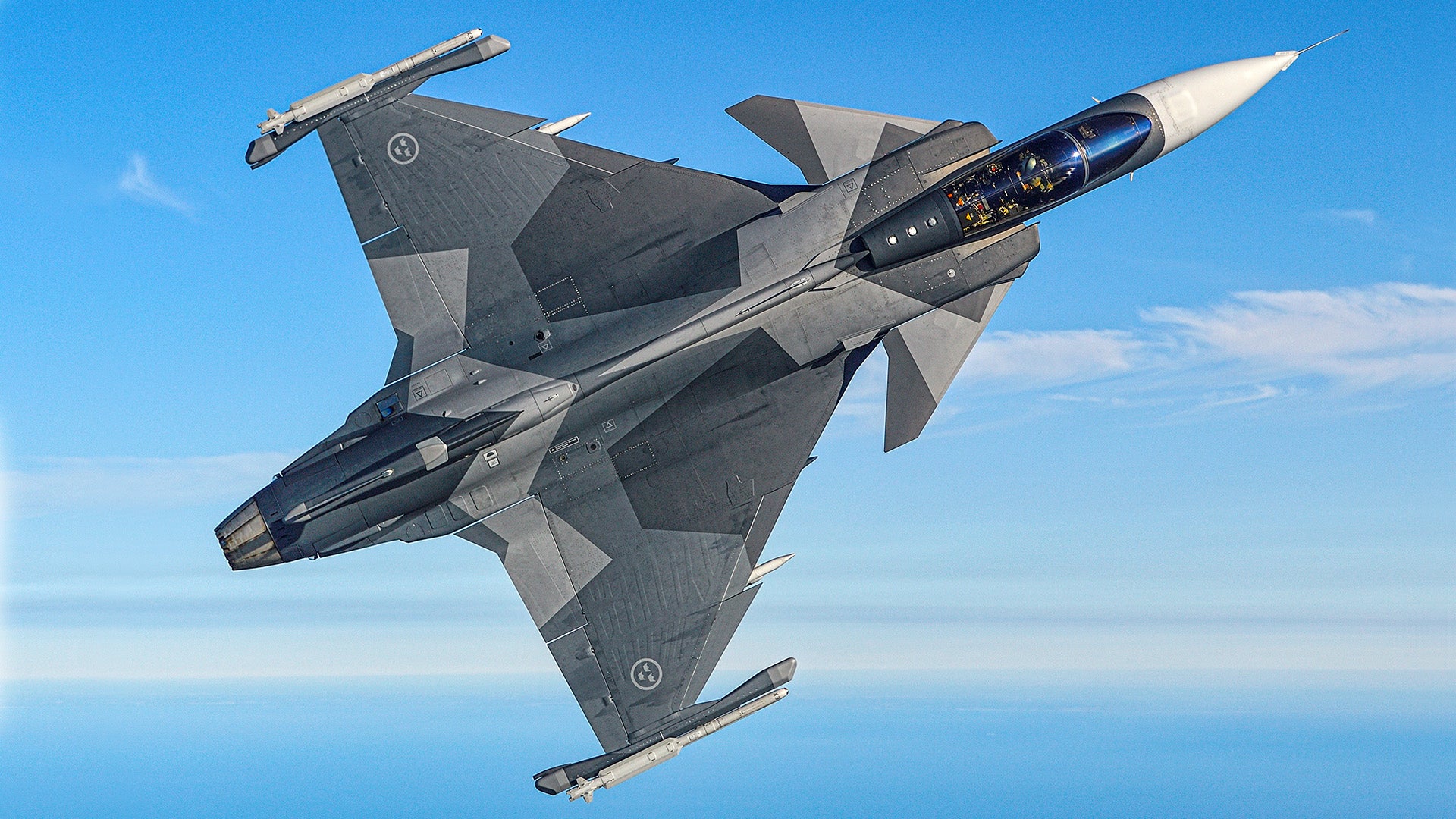For a country with a population of just over 10 million people, it’s impressive that Sweden is able to maintain an indigenous fighter aircraft program that is first and foremost designed to meet a domestic need. The Saab Gripen is a small and versatile fighter that meets a very specific Swedish requirement, but its mantra of being “affordable” doesn’t mean it compromises on lethality. In fact, the latest Gripen E variant includes features that could help to inspire others’ future fighter plans.
The Gripen E might look and feel much the same as previous models of the fighter, but it’s such a significant advance that manufacturer Saab even considered giving it a totally new name. The E-Series, as it is now dubbed, builds on the lineage of the original Gripen A single-seat and B two-seat variants. The Gripen C/D is its direct predecessor, and although the single-seat E-model looks externally very similar to its forebears — it’s a very different beast in several ways.
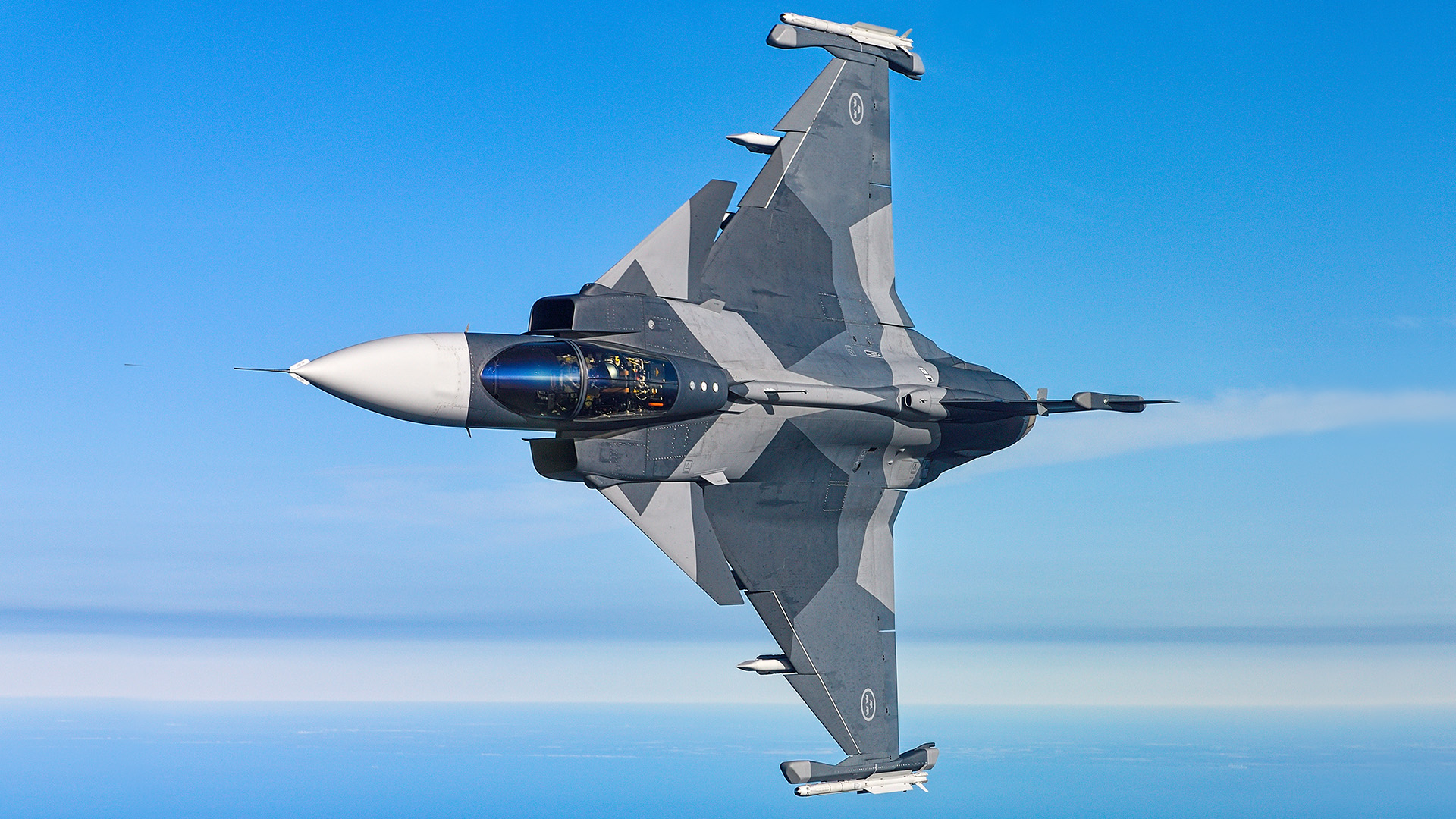
Gripen E origin and innovation
The first prototype Gripen E made its maiden flight from Saab’s Linköping facility on June 15, 2017. The aircraft is slightly larger than the C-model at just under 50 feet and includes a beefed-up fuselage that accommodates approximately 30 percent more fuel. The aircraft also features larger air intakes, the more powerful General Electric F414-GE-39E engine, and a total of 10 hardpoints. A two-seat F-model is now in development for Brazil, which currently has 36 E/F variants on order as the first export customer for the latest versions.
December 2020 saw the first of a planned 60 Gripen Es being handed over to the Swedish Air Force to commence the joint test program for verification and validation between Saab, the Swedish Armed Forces, and FMV, the Swedish procurement agency. This manner of joint testing is seen as an important way for Saab to closely monitor the needs of Sweden’s frontline forces — something it takes very seriously as it rolls-out a near-continuous series of upgrades to meet the latest requirements.
“Every year we aim to fly for a few weeks with an operational Gripen squadron,” Saab Gripen E test pilot Robin Nordlander told The War Zone. He started out as a pilot in the fighter variant of the popular Viggen in the Swedish Air Force and has been a test pilot with Saab for 14 years. “Flying with a squadron allows us to maintain our operational perspective, and gain insights into the latest ways that air force pilots are using the aircraft. That gives us the best advantage to ensure our developments are based on actual requests from the operational community.”
“In the development of the Gripen E-Series, we have aimed to maintain that heritage from the Viggen, through the Gripen A/B, and the C/D development because we are confident of a product that is competitive in the operational arena.” The Swedish Air Force recently announced that the C/D variant will remain in operation past 2030 to help streamline the introduction of the new E-Series from 2023.
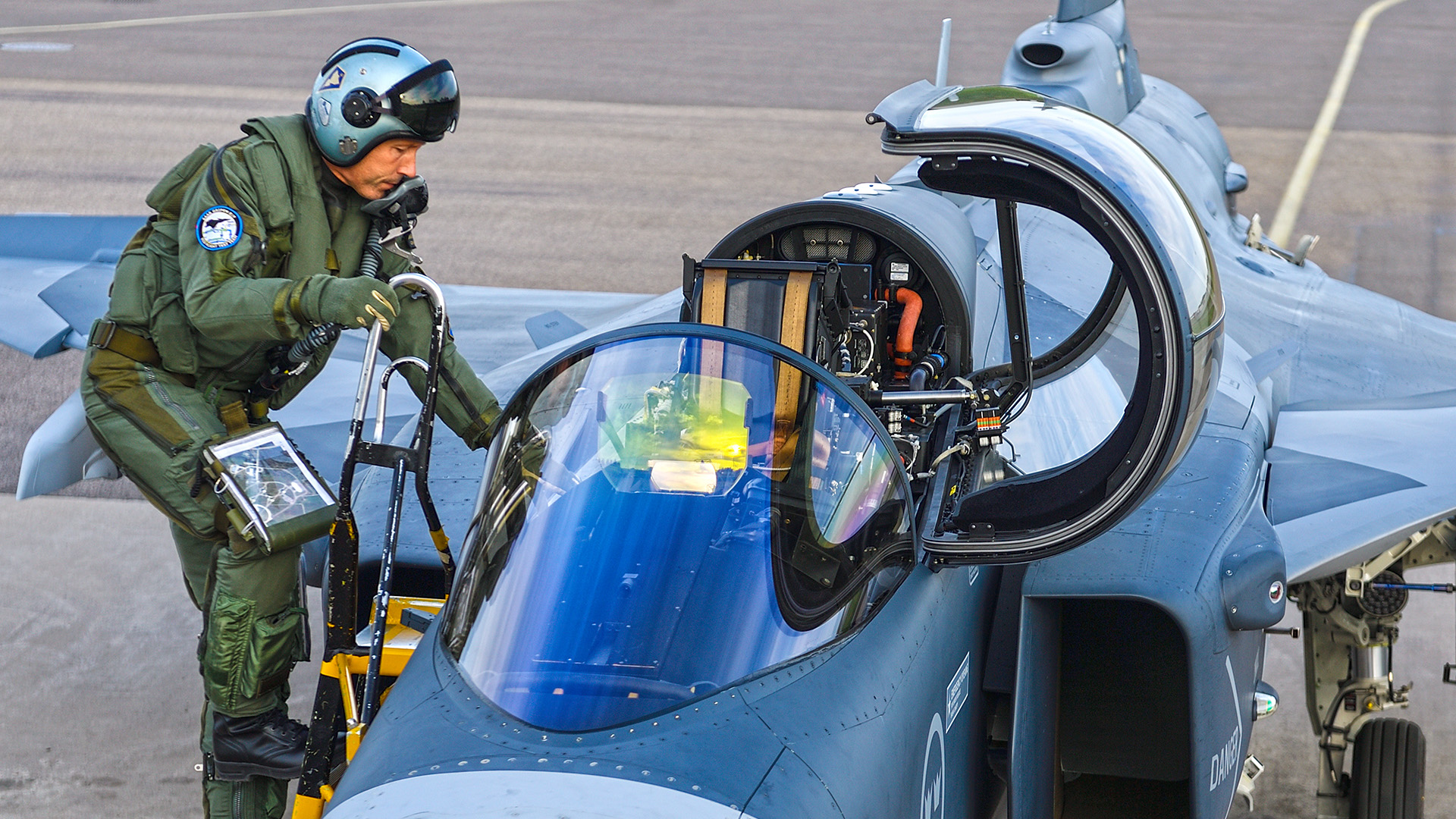
“We must look to the future to develop every area of Gripen as much as we can,” Nordlander continues. “Gripen E’s 30 percent more fuel means extended range, and that has a huge impact for the pilot. We also increased the payload with the two additional hardpoints, and added new sensors and weapons.” The Gripen E can carry up to seven MBDA Meteor beyond visual range air-to-air missiles, it features the Leonardo ES-05 Raven Active Electronically Scanned Array (AESA) radar, and the Leonardo Skyward G infrared search and track (IRST) sensor. The new Electronic Warfare System (EWS) is a feature that Saab is especially proud of, and it features a 360-degree spherical Missile Approach Warning System (MAWS).
It is the Gripen E’s avionics architecture that is particularly noteworthy. Saab claims that its design is nothing short of revolutionary. It is configured to enable the rapid insertion of new hardware and updated software applications to embrace new missions. This is an area in which Saab says it has invested enormously in developing. The computers themselves can be swapped out quickly to allow constant increases in processing power. It also means that customers can design and develop their own software, enabling the rapid introduction of new technologies and systems to deal with ever-evolving threats without hardware impeding progress.
Saab says it is actively working towards avionics and mission systems that are adaptable on the battlefield so that an operator can fight ‘day one’ of a conflict, learn, and then adapt by adding new or adapting existing software applications to give a combat advantage for ‘day two.’ It’s the kind of agile avionics performance that is being mandated for U.S. manufacturers as the military seeks to field smaller fleets of “Digital” fighter aircraft far more swiftly and apply new capabilities to new and existing types extremely fast, with software updates even potentially occurring while the aircraft is in flight.

Radar on a swashplate and integrated IRST
Alongside its impressive avionics, the Gripen E totes some very high-end sensors. It was the first fighter aircraft to feature an AESA radar mounted on a rotating repositioner or swashplate. This enables the electronically scanned antenna, which is normally fixed in a forward position on fighter aircraft, to be slewed to the left and to the right in order to increase its field-of-view.
“The swashplate makes it possible to have a 140-degree search volume within a 200-degree look-angle around the nose of the aircraft,” explains Nordlander. “As well as scanning directly ahead, the swashplate allows the aircraft to scan further to the left and right, in fact, you can actually “look” aft left or aft right with the radar. This is a huge benefit during BVR [Beyond Visual Range] engagements or in a GBAD [Ground-Based Air Defense] environment when you don’t want to point the aircraft directly into a specific area.”
Explaining the merits further, Nordlander states: “You want to minimize the potential for an opponent to launch [a missile] toward you — and with the swashplate arrangement you can actually fly slightly away from an area of interest, while still looking with the radar into that area. So, if I am defensive and just looking into an area I can turn away or remove my velocity into that area, but still scan it. If I am offensive and want to make a long-range missile shot against a target, I don’t have to close on the opponent after my shot and give them the possibility to launch [a missile] against me. With the swashplate, I can “crank” [turn] away from the target more than 90-degrees and still maintain a lock with the radar. That’s especially powerful when combined with the [Meteor] air-to-air missile.”
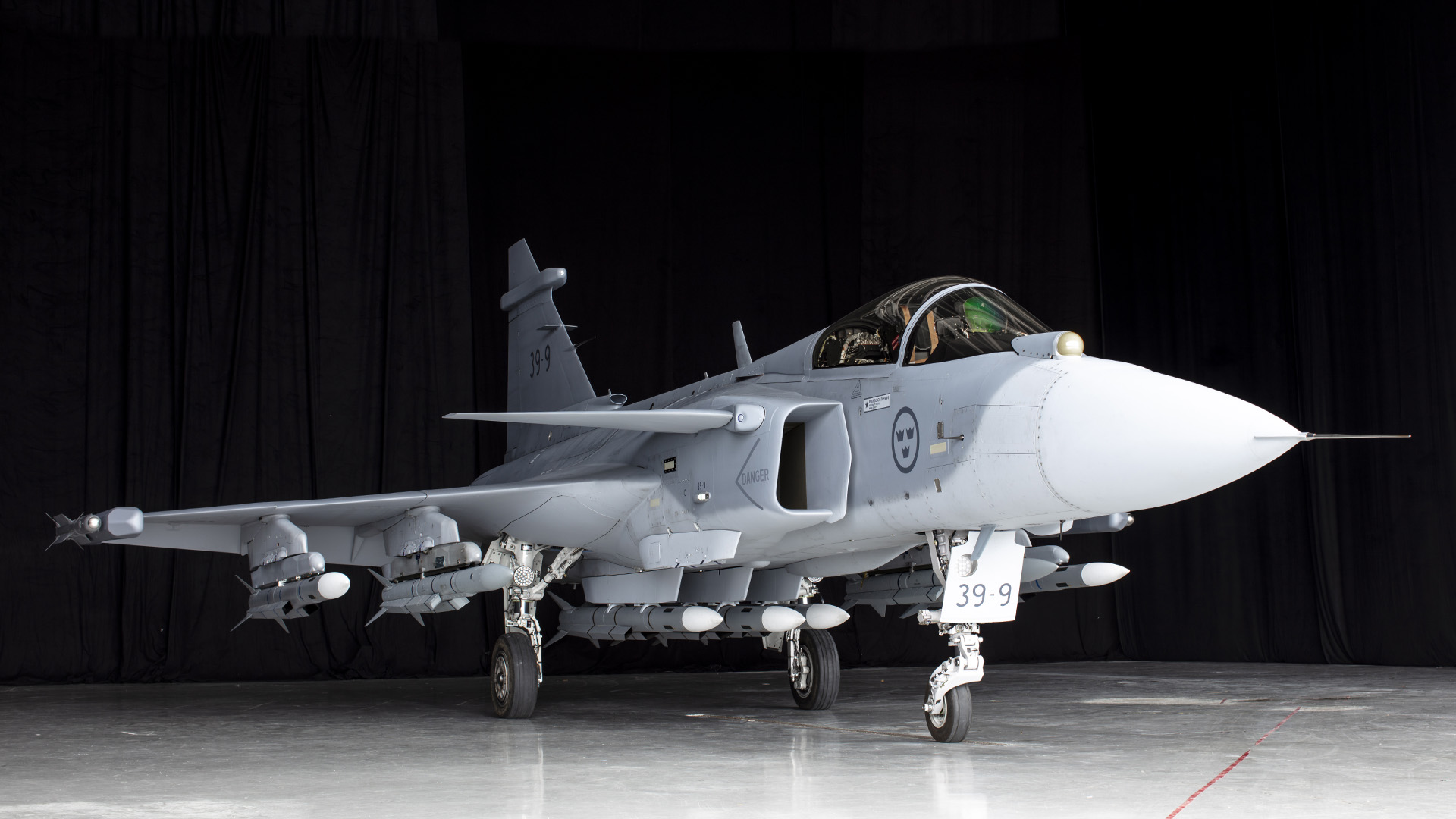
The duo of the Meteor missile and the AESA radar on a swashplate is a powerful combination for the Gripen E. Theoretically the pilot can fire missiles at enemy fighters at extreme ranges and then hide in their radar’s “doppler notch,” while still guiding missiles to their intended target. The potency of this type of arrangement has led to some fighters incorporating side-facing cheek-mounted radars, such as what’s seen in the Su-57, allowing them to employ similar tactics. You can also read more about Gripen’s AESA swashplate arrangement here.
Essentially, the Gripen’s AESA means the aircraft can still guide a long-range missile shot while “beaming” into the enemy’s ‘doppler notch.’ Beaming is when a fighter turns approximately 90 degrees away from the enemy’s pulse doppler radar array to fly perpendicular to it. Fighter radars use doppler shift to gauge a target’s relative velocity, filtering out low relative velocity objects, particularly things like ground clutter. The beaming fighter, which is not moving toward or away from the enemy radar while flying perpendicular, can enter the enemy ‘notch’ — potentially rendering it invisible or at least hard to keep an engagement-quality lock on. You can read more about this tactic here.
It has been officially stated by Saab that the company has a strategy of trying to counter the benefit of stealth design technology in a threat aircraft. The use of an IRST is part of the overall sensor suite that is designed to help the Gripen partially remove the cloak of a stealthy platform.
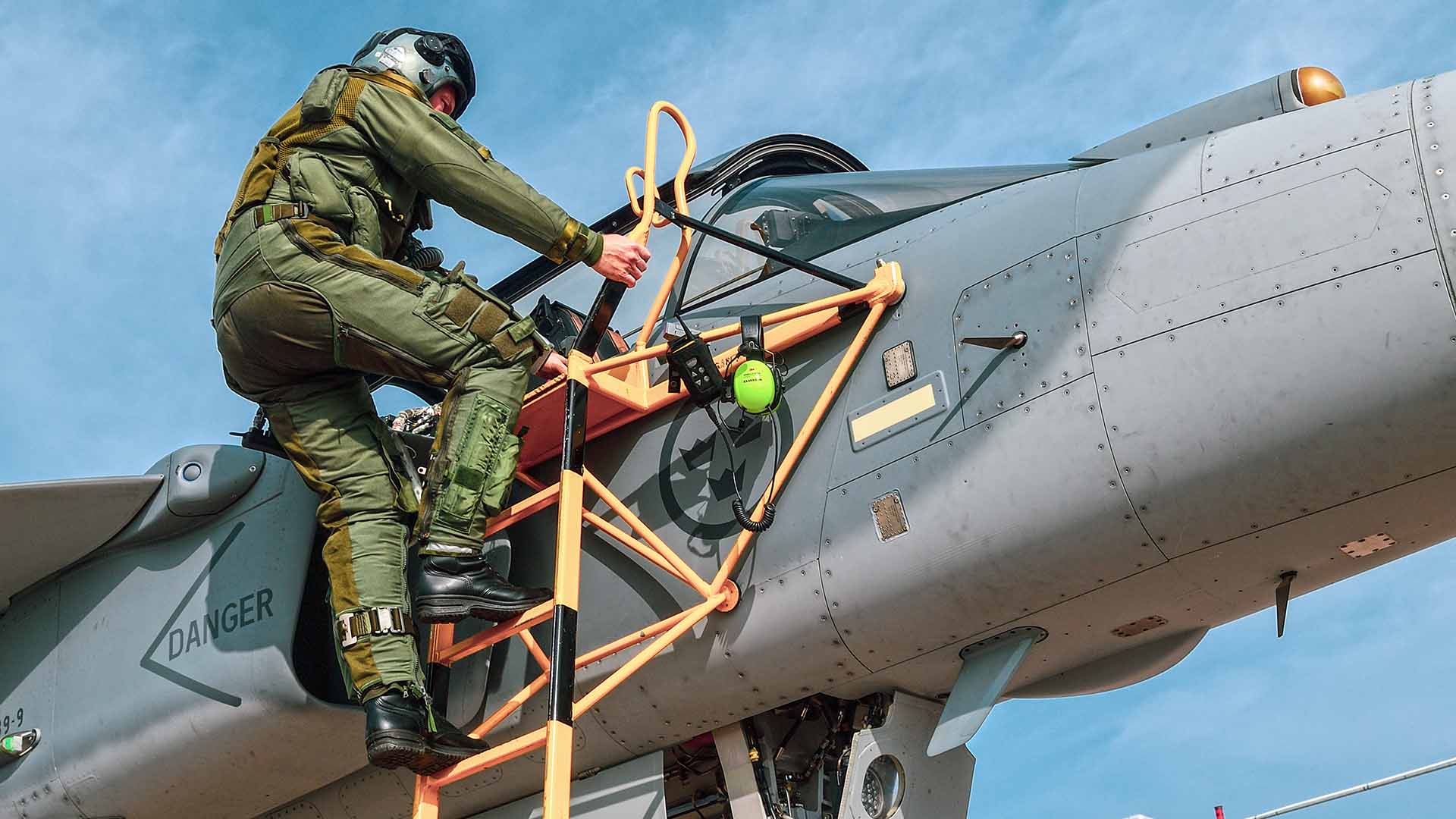
“The IRST is part of the equation, but we are also doing a lot of radar work connected to algorithms. It’s about processing very small signals, finding the difference between what is a target, what is background noise, and what is a bird, for example. Today, our work with algorithms means we are able to detect contacts that are around 10 times smaller compared with just a few years ago. So, yes we are working to counteract stealth, and that’s not just with an infrared sensor, because stealthy platforms employ IR reduction techniques — it’s about combining our sensors to achieve this.”
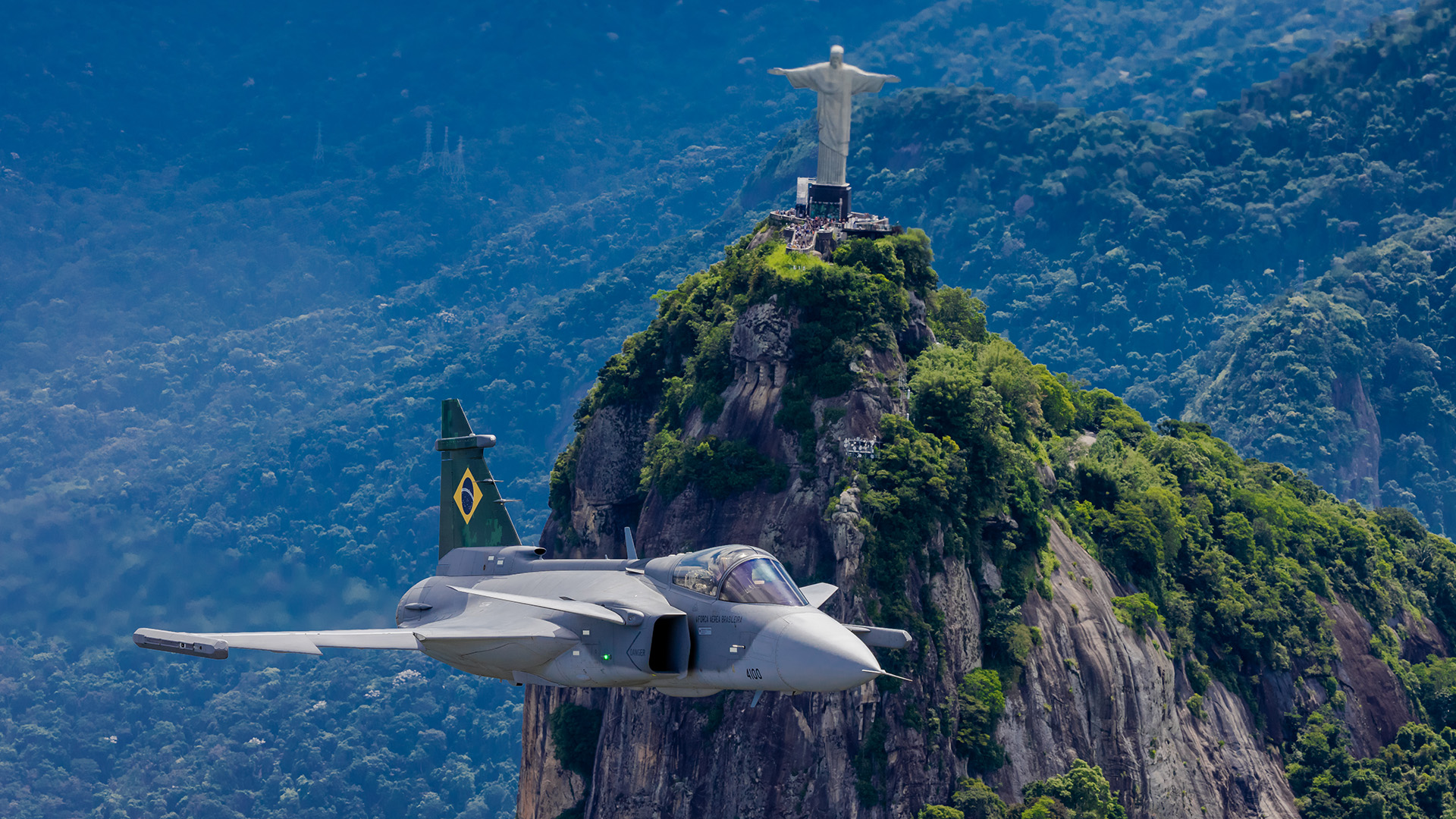
Electronic warfare cloak
Gripen E itself does not feature geometric stealthy design features, with Saab’s view that with software and hardware technology changing at such a rapid pace, stealth aircraft will ultimately become more visible to radars. As any airframe is very hard to change or reconfigure in the future, without enormous time and cost, Saab decided the better approach is to stay in-step with the competition by using rapidly evolving technologies other than stealth to help win the war, such as advanced electronic warfare.
Designing and fielding low-observable aircraft such as the F-35 comes at an extremely high cost. It also takes a lot of maintenance to keep a stealthy aircraft flying in a combat-ready state. The Gripen is designed to be rapidly deployable in the field at austere bases with a small logistics footprint and maintained by a small team that can quickly service and regenerate fighters. “With Gripen, you do a turnaround within 10 minutes if you’re doing air-to-air [missions] — you do the refueling and re-armament — and that is building sortie generation so that we can perform a lot of missions in a defined period of time,” commented Saab’s Magnus Skogberg.
Using the “cloak” of an advanced and reconfigurable electronic warfare system rather than investing in an inherently stealthy — but far more costly — configuration supports Saab’s philosophy of presenting a price tag that Sweden, and its customers, can afford.
One of the aces up Gripen E’s sleeve is therefore its electronic warfare system or EWS. It’s completely new in the Gripen E and provides what Saab refers to as a “digital shield.” The idea was to continuously and exponentially grow and develop the system to meet future threats. The embedded EWS combines active and passive systems to help protect the aircraft, which is combined with a 360-degree spherical missile approach warning system.
“All modern fighter aircraft carry some form of EWS,” says Nordlander. “In some environments, you need to be electronically silent, and our EWS together with the IRST provides the ability to image and track objects passively. This is a critical factor because it means you can divide your formation into groups that are active — with their radar working for example — and groups that are passive, and we can share data between the elements.”
“The most impressive part of our new EWS is the resolution and sensitivity. When it comes to detecting and identifying contacts, this part of the overall mission system is vital and one of our most advanced features. As a pilot, I want 360-degree coverage all around me, and I want high resolution and seamless fusion with my other sensors. The EWS must work as an integrated part, whether I am flying offensively or defensively. I need to know if a radar is tracking me, for example, or if a missile has been launched at me.”
“Gripen E’s EWS includes powerful active electronic and passive countermeasures to handle any situation, so I can pop out defensive aids that have a passive action initially, then they can activate an active element.” Systems such as the Leonardo BriteCloud are a good example of the kind of technology now being employed that build on the legacy chaff and flare systems.
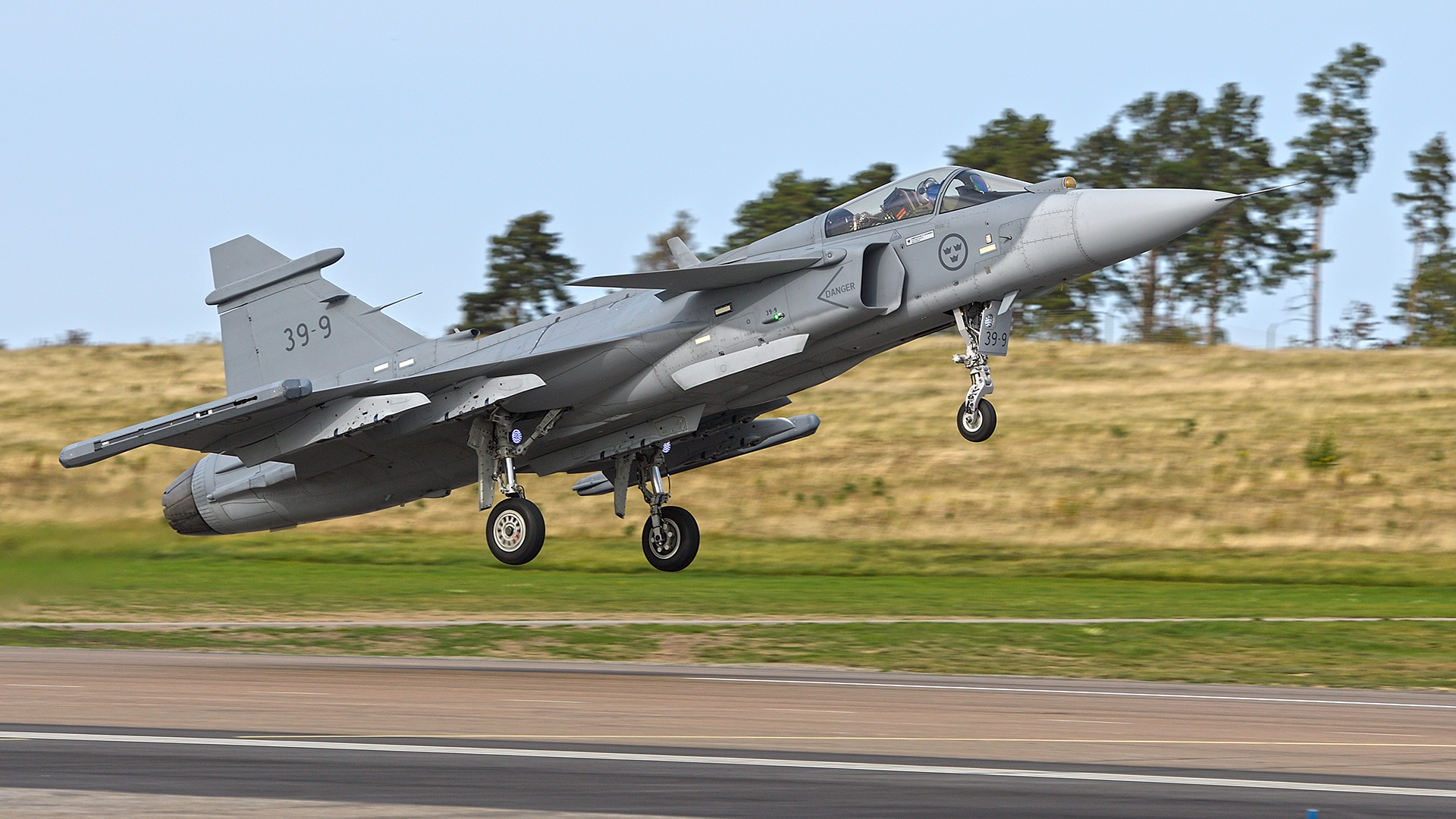
Advanced cockpit and sensor fusion
Monitoring all of these advanced systems, the pilot sits in front of a completely new cockpit layout. After much deliberation, the Swedish Air Force decided to follow Brazil and opt for a single Wide Area Display (WAD) in the Gripen E. This is an evolution over the three large displays in the Gripen C/D cockpit. “The WAD adds huge possibilities for the pilot regarding situational awareness and the ability to act on this,” says Nordlander.
Saab has spent a tremendous amount of time fuzing the Gripen E’s range of sensors and presenting swathes of data to the pilot in an uncomplicated and intuitive manner. “We have chosen to have a map across the entire area of the display, and have your position shown wherever you want it to be, but to start with it is centered. The modern battlefield is geographically huge and the pilot needs situational awareness over a vast area. So on the map, we have overlaid mission routes, other platform detail, and all relevant objects in the air and on the ground.”

“The WAD has touchscreen functionality, and the pilot can create regions of different sizes and various information. Sensor views can be overlaid and can vary in size and zoom. In the Gripen C, we found that pilots change map scaling a lot because you may have detailed interest in one area, simultaneously with the need to monitor a zoomed out larger area — in Gripen E we increase the SA with the possibility to overlay one or several maps of selected areas and zoom level.”
“Our testing has found that the possibilities with the WAD presentation are almost too flexible, so we are recommending default setups that mean the pilot actually decides and pre-selects these in the mission support system [MSS] on the ground, then they can swap between them during the flight. You can create a table in the MSS then fast access in the aircraft as to how you want WAD to look. Then you can deviate from those main set-ups if required.” Nordlander says the Gripen E test team is carefully proceeding with how it introduces the new display. “There are touch functions that may or may not be used by the pilot, and there will be times they want to use HOTAS [Hand-On Throttle And Stick], push a button, or turn a knob. We would never accept functionality only via touch.”
Saab has chosen the Targo II Helmet Mounted Display (HMD) for the Gripen E. Unlike the F-35, for example, the cockpit blends the HMD and WAD with a Head-Up Display (HUD). “We prefer the redundancy of a large HUD and an HMD. We had a lot of discussions, but we weren’t ready to go with a non-HUD layout [as in the F-35]. Also, sometimes pilots may want to fly the jet without having to wear the HMD, so we offer choice.”
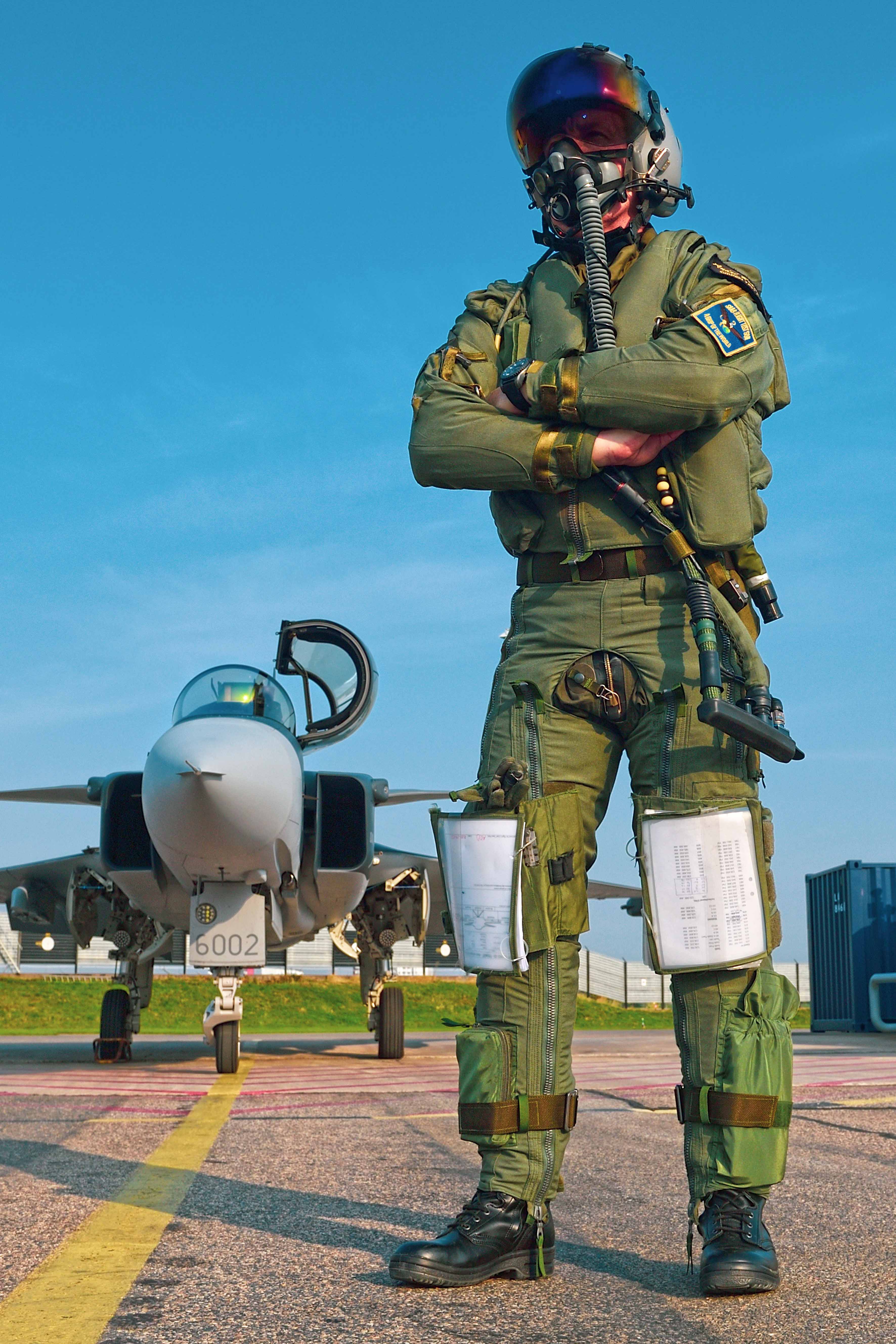
“We have a lot of experience that has evolved through the years when it comes to Human Machine Interface [HMI]. In the Gripen, this is designed to select and filter critical items for the pilot. For example, we don’t show engine RPM [Revolutions Per Minute], we don’t show which tanks the fuel is in unless required. If the system is working perfectly well, it won’t tell the pilot anything. We have automated a lot of the functionality in the system. This is a huge step forward in performance and how we use the system.”
“The pilot is able to select the level of automation they want, based on the scenario. In Gripen C we have already gone with this principle. So a pilot can select to use systems manually, semi-automatic, or totally automatic. It means the pilot can decide that they want to monitor and manage everything, select to approve or reject suggestions from the system, or do what is best according to the system. This information is presented via symbols on displays, by sounds, or by speech messages, depending on the mode. Essentially, we are trying to make it as easy as possible for the pilot to make critical tactical decisions.”
Saab explains that it sees Human-Machine Collaboration as the next step in ensuring that the platform and pilot work together, further enhancing the possibilities of sensor fusion, adaptability to missions, and even learning. “When it comes to sensor fusion, this is all about maintaining the absolute maximum situational awareness. You can have the greatest kinetic performance in the world, but without situational awareness, you’re a sitting duck. In Gripen E we talk about transparent fusion. I need to know what sensors/platforms are providing which data and what the quality of that data is, to be able to make the best possible decision! It is also crucial to know what the opponent knows about me, in the decision making.”
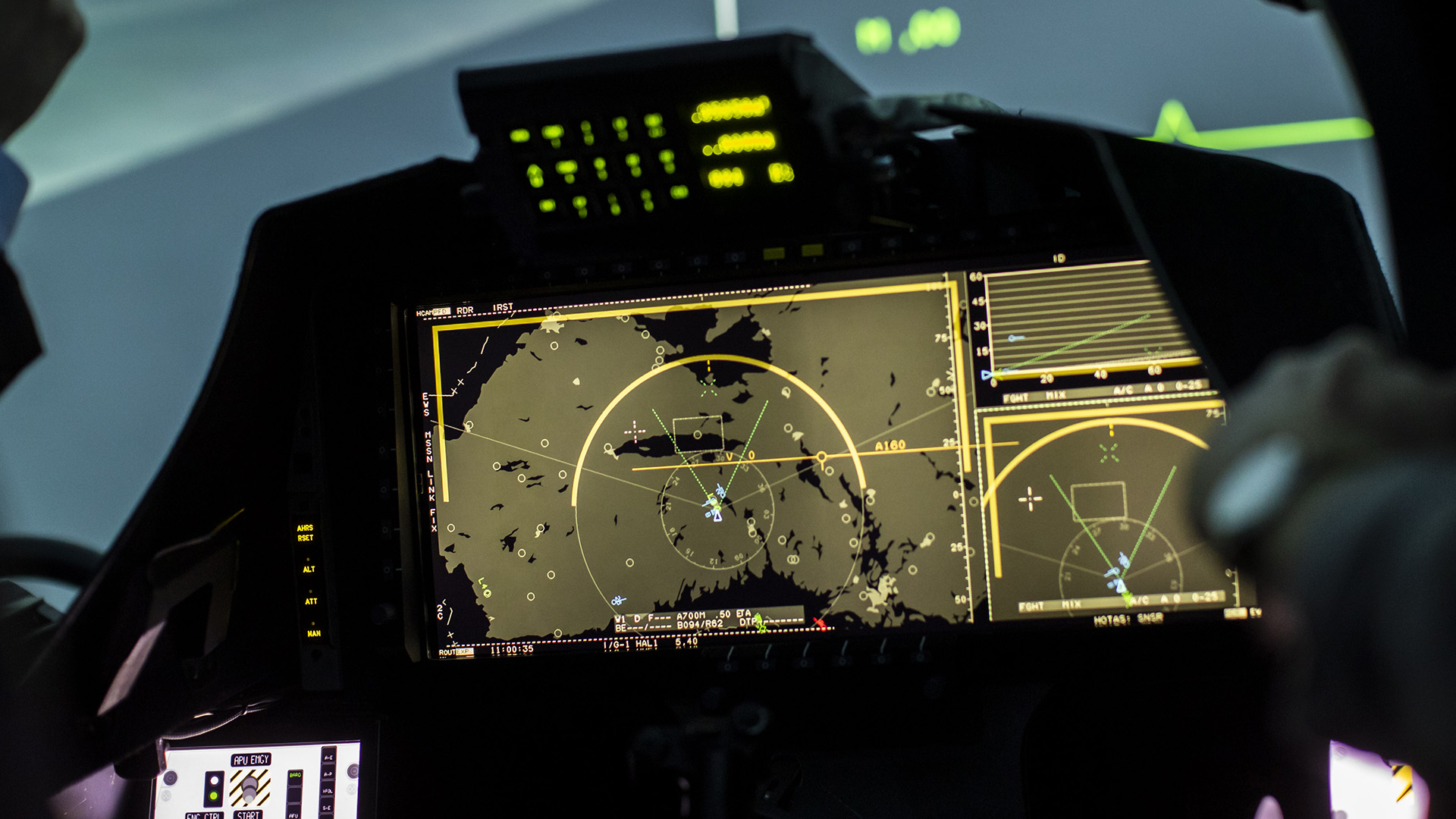
“We also have a fusion between platforms. In Sweden, we started flying with a fighter-to-fighter data link at the beginning of the 1980s in the Viggen. The idea came from being outnumbered by an opponent, so we created it as a force multiplier in order to share information — to see what your wingman sees. This created a tactical behavior and a lot of experience which has helped us to create a system that is able to cope with a far more complex tactical situation.”
“We also use onboard simulation/calculation from the mission data to provide the pilot with suggestions for the best course of action. Depending on the opponent, it can tell the pilot when the other aircraft may have a launch opportunity on them, and things like if they crank left now, for example, what would happen. It’s extremely enhancing as an operational feature. So a pilot doesn’t just look at the displays and work out for themselves if they are in danger, or not, the aircraft can actually inform and suggest actions to the pilot, kind of like a what-if, all the time.”
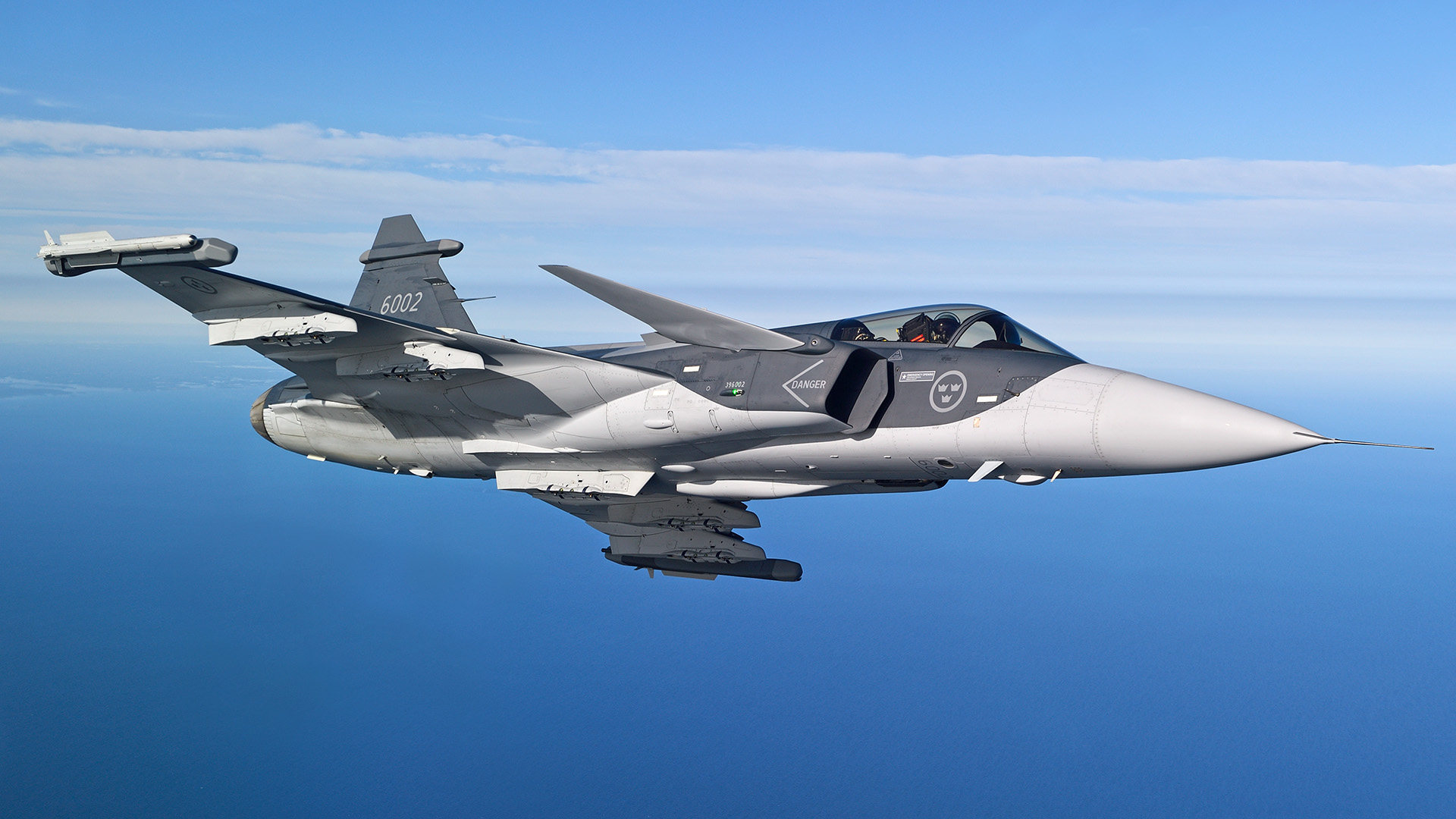
When it comes to training, the Gripen also includes embedded synthetic training scenarios. So a single ship can go out and fight a simulated bandit in a Beyond Visual Range (BVR) air-to-air fight, for example. “We don’t need to have all of those entities airborne,” Nordlander explains. “Because most modern air forces don’t have an unlimited number of airframes, we need to be able to create complex large formation situations, without necessarily having all those assets in the air. It’s all part of the embedded synthetic training in the Gripen E, so we can mix live and synthetic.”
“We don’t only have air targets, we can also include simulated Ground-Based Air Defense [GBAD] systems and ground targets, and all of this can be pre-programmed in the MSS. So a squadron can fly a single or two-ship mission, and have that formation countered by GBADS, simultaneously with a synthetic BVR scenario. So, if you can only go out and fly a single ship, you’re not limited to just flying loops all day!”
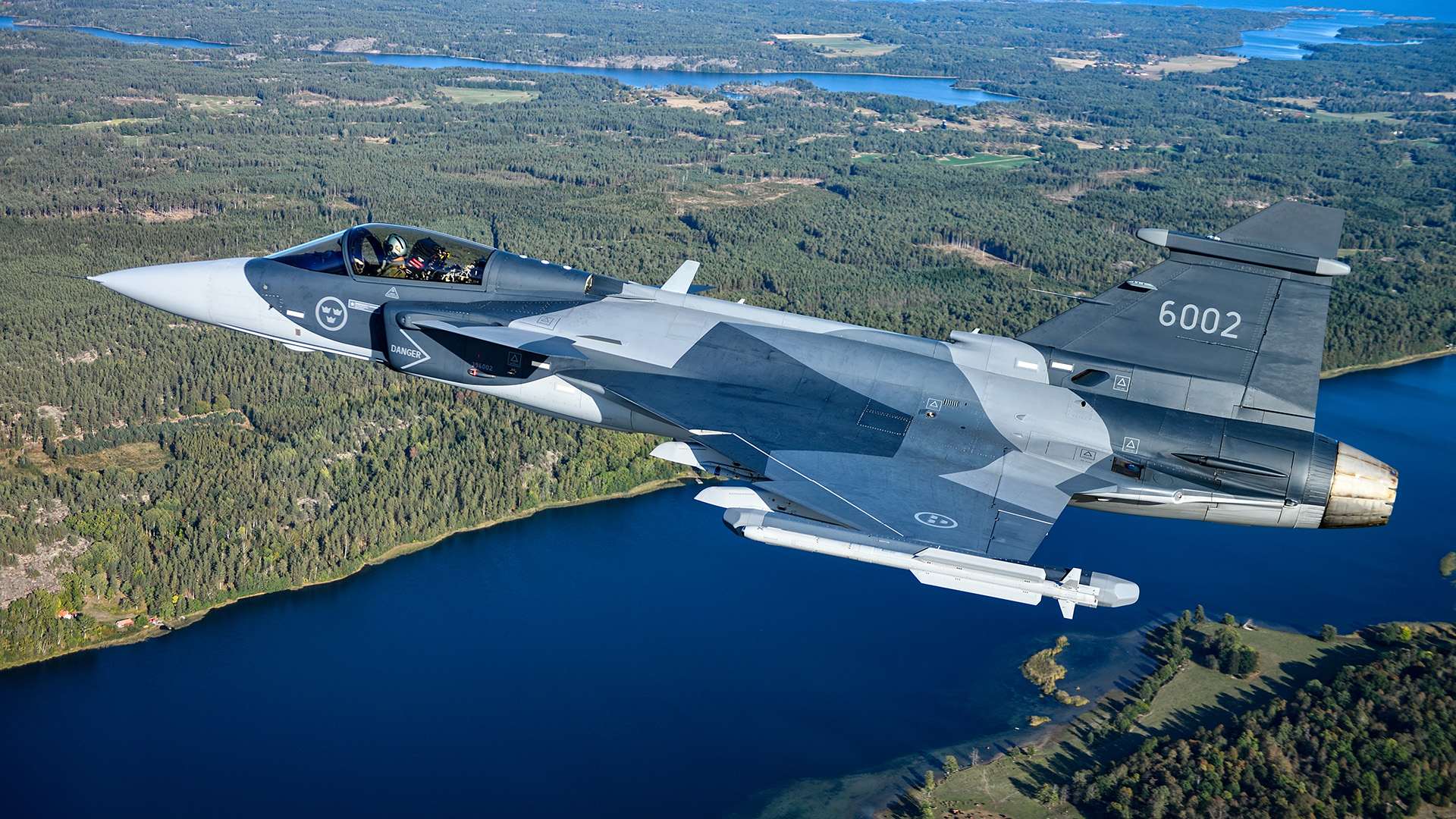
A wolf in sheep’s clothing
The Gripen has sometimes attracted criticism over raw performance. It’s a small airframe that can be called upon to lug heavy load-outs. The Gripen E is heavier than its predecessor, with additional pylons, and increased fuel capacity, but this is offset by an uprated engine in the shape of the GE F414, versus the F404 in previous models. “I’ve been here at Saab Flight Test for 14 years and we get a lot of foreign evaluator pilots visiting. They often comment after they have flown the Gripen that the performance numbers cannot be correct,” says Nordlander.
“The reality is that as far as I know, no one has been able to minimize drag the way we have with the Gripen. It’s all about the flight control software and what we can do with the aircraft configuration with the canards and delta wings working together. The intelligent flight control system is always trimming the aircraft for the least drag, in every flight regime. This means the 22,000 pounds thrust of the F414 in the Gripen E has greater value than the published numbers suggest.”
Nordlander says the Gripen E was designed to match, and where possible exceed, the performance of the Gripen C, despite the increase in size and weight. “We have not lost anything in terms of performance,” he asserts. “In fact, in a clean or light fighter configuration without heavy external stores, the performance is actually better than the Gripen C. At high all-up weights with more hardpoints, more fuel, and more stores, we have not lost anything. Sometimes it is impossible for the pilot to detect if there is a store on the aircraft or not. In fact, if I am flying in a configuration with a few missiles, I cannot feel the difference in performance and handling qualities over a completely clean jet.”

So, while the Gripen E-Series might look similar to earlier versions of the fighter, it is a measurably different beast. It perhaps deserves to be known as the Super Gripen, given that its advance is akin to how the F/A-18 Hornet evolved into the F/A-18E/F Super Hornet.
Swedish industry has a reputation for quietly going about its business, and Saab has focused its efforts on creating a fighter that must be affordable, without impeding quality. The Gripen doesn’t require huge servicing infrastructure, it offers excellent availability, and it can be supported by a small team of maintainers. Those traits alone combine into a highly attractive proposition in an age where the newest combat jets can be ready to fly a combat mission in as little as half of the time.
While the Gripen E-Series was born in an age where stealth fighters are proliferating around the globe, it offers a well-rounded array of higher-end capabilities in a relatively small, mature, and simpler package. As such, this wolf in sheep’s clothing has a lot to howl about.
Contact the editor: Tyler@thedrive.com
